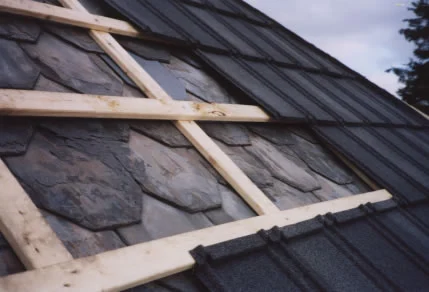Metal roofing has gained popularity for its durability, energy efficiency, and long lifespan. If you’re considering a metal roof for your home but have existing shingles, you might wonder whether it’s possible to install a metal roof over them. In this article, we’ll explore the feasibility and benefits of putting a metal roof over existing shingles, as well as the steps involved in this process.

Understanding Metal Roofing Over Shingles
The Practice of Overlaying
Overlaying a new roofing material over an existing one, such as placing a metal roof over shingles, is a common practice in the roofing industry. It can save time and money compared to complete roof tear-offs, where the old roofing material is removed entirely.
Benefits of Metal Roof Over Shingles
1. Cost-Efficiency
One of the primary advantages of installing a metal roof over existing shingles is cost savings. Roof tear-offs can be expensive due to labor and disposal fees. By avoiding the tear-off process, you can reduce both time and expenses.
2. Reduced Environmental Impact
Metal roofing is a sustainable and environmentally friendly choice. By overlaying, you minimize the waste generated from tearing off and disposing of the old shingles. Metal roofing materials are also recyclable at the end of their lifespan.
3. Added Insulation
The existing shingles act as an additional layer of insulation beneath the metal roof. This can help improve energy efficiency and provide better temperature control inside your home.
Considerations Before Installation
1. Roof Condition
Before proceeding with a metal roof overlay, it’s crucial to assess the condition of your existing roof. If there are extensive leaks, rot, or structural issues, it’s best to address these problems before installing a new roof. Installing a metal roof over a damaged substrate can lead to ongoing issues.
2. Weight Considerations
Metal roofing is generally lighter than other roofing materials, but it’s essential to verify that your existing roof structure can support the additional weight. Consult with a structural engineer if you have concerns.
3. Local Building Codes*
Check with your local building department to ensure that overlaying a metal roof over shingles complies with local building codes and regulations. Some areas may have specific requirements or restrictions regarding this practice.
Steps for Installing Metal Roof Over Shingles
1. Roof Inspection and Repairs
Begin by inspecting the existing shingles for any damage or issues. Repair or replace damaged shingles as needed. Ensure that the roof deck is in good condition and free from rot.
2. Install Underlayment*
To prevent any potential moisture issues, install a high-quality roofing underlayment over the existing shingles. This acts as a barrier against water infiltration.
3. Batten Installation*
A series of vertical battens or purlins are installed over the underlayment to create an air gap between the metal roof and the shingles. This airspace helps with ventilation and prevents moisture buildup.
4. Metal Roof Installation*
Install the metal roofing panels over the battens, following the manufacturer’s instructions for fastening and sealing. Proper installation is essential for the long-term performance of your metal roof.
Conclusion: A Practical Option with Proper Planning
Putting a metal roof over existing shingles can be a practical and cost-effective option, provided that your existing roof is in good condition, your local building codes allow it, and proper installation practices are followed. This approach offers benefits such as cost savings, reduced environmental impact, and improved insulation. However, it’s crucial to assess your specific situation, consult with professionals as needed, and ensure that the process complies with local regulations for a successful and durable metal roofing installation.



Leave a Reply